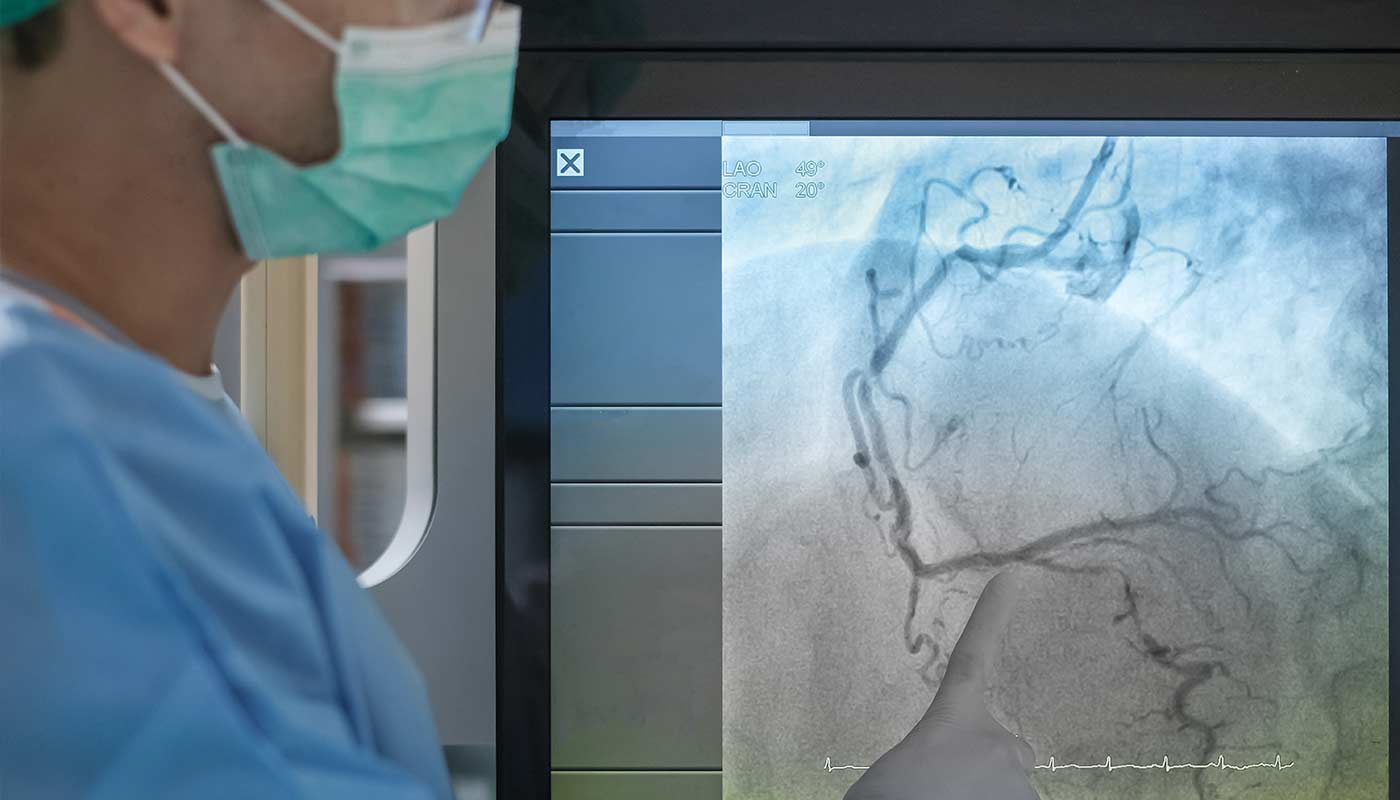
Diagnostic and Therapeutic Cardiac Catheterization
We often hear about heart patients needing cardiac catheterization but may not know whether it is a diagnostic or therapeutic procedure. Continue reading to learn more about both types of cardiac catheterization.
What is Cardiac Catheterization and When is it Needed?
Cardiac catheterization is a medical procedure used to diagnose and treat heart diseases. It involves inserting a thin tube through the blood vessels to reach the heart. A doctor may recommend cardiac catheterization to diagnose or treat heart disorders. Below are the reasons for requesting diagnostic and therapeutic cardiac catheterization.


Diagnostic Cardiac Catheterization
This procedure helps identify the cause of many heart problems, such as:
- Diagnosing the cause of chest pain and irregular heartbeats.
- Evaluating the efficiency of the heart muscle’s function.
- Checking the blood flow to the heart, oxygen levels, and blood pressure within the heart.
- Assessing or confirming coronary artery disease, valve diseases, or aortic diseases. A doctor may recommend this procedure as part of a routine check or shortly after a heart attack.
- Taking a small sample of heart muscle tissue for examination.
- Determining the need for future treatments like coronary bypass surgery or heart transplantation.
- Diagnosing several heart disorders, such as cardiomyopathy, aortic valve stenosis, mitral valve regurgitation, or pulmonary hypertension.
Therapeutic Cardiac Catheterization
Some heart treatments can be performed during or after a cardiac catheterization. Additionally, imaging can be done to capture detailed images of the heart, aiding in the selection of appropriate treatment. Examples of procedures that use catheterization include:
- Coronary angioplasty.
- Placement of a heart stent.
- Heart valve replacement.
- Coronary artery CT imaging.
Preparing for Cardiac Catheterization There are several guidelines to keep in mind when preparing for cardiac catheterization:
- Stop eating or drinking for at least 6 hours before the procedure or as directed by the doctor.
- Inform the doctor of all medications being taken, as some, like blood thinners (e.g., warfarin, aspirin), may need to be stopped before catheterization.
- Notify the doctor if you have diabetes, as contrast dye used during catheterization can increase the risk of side effects for some diabetes medications, such as metformin.
Before Cardiac Catheterization Here are key details of what happens on the day of cardiac catheterization:
- You’ll be asked to empty your bladder before changing into a hospital gown, and you’ll need to remove jewelry, dentures, or anything that may interfere with the procedure.
- An IV line will be inserted in your arm to administer medications and fluids during the procedure.
- Hair around the insertion site (usually the groin or arm) will be shaved. The catheter may also be inserted through other areas, such as the neck.
- Sterile drapes will cover the catheter insertion site to help prevent infection. It’s important to keep your arms and hands by your sides beneath the sterile drapes.
- Electrodes will be placed on your chest and connected to an electrocardiogram (ECG) machine to monitor your heart rate.
- You’ll receive a mild sedative to help you relax, but you’ll remain awake and conscious during the procedure. In some cases, no sedative is given if the doctor needs to measure specific parameters, such as pressure within the heart chambers.
- In some cases, a urinary catheter may be placed during the procedure.
How is Cardiac Catheterization Performed? During cardiac catheterization, the doctor inserts one or more thin, hollow tubes (catheters) into a blood vessel, usually in the groin or wrist, and guides them to the heart. The steps taken after catheter insertion depend on the procedure’s goal. Examples include:
Coronary Artery CT Imaging This imaging detects any blockages in the arteries supplying blood to the heart. The catheter is inserted into a blood vessel, typically in the groin or wrist, and dye flows through the catheter. X-ray images of the coronary arteries are then taken, with the dye making the blood vessels more visible in the X-ray images.
Balloon Angioplasty This treatment uses a catheter and a small balloon to widen or open a narrowed artery near the heart. The catheter is inserted through either the wrist or groin. Sometimes, a tube called a stent is placed inside the artery to keep it open.
Balloon Valve Repair This treatment uses a catheter and a small balloon to enlarge a narrowed heart valve. The catheter’s position depends on the type of heart valve issue.
Heart Valve Replacement Doctors use catheters to remove a narrowed heart valve and replace it with an artificial one, such as in transcatheter aortic valve replacement (TAVR).
Treatment of Congenital Heart Defects Cardiac catheterization can be used to close heart holes, such as patent foramen ovale (PFO) or atrial septal defects (ASD).
After Cardiac Catheterization Following cardiac catheterization, you’ll be monitored for several hours. The length of time depends on your health condition and the purpose of the procedure. It’s normal to feel pain at the catheter insertion site. You should inform your doctor immediately if you notice signs like increased swelling, pain, or bleeding.
Is Cardiac Catheterization Dangerous? Some side effects or risks may result from cardiac catheterization, including:
- Bruising or bleeding at the catheter insertion site.
- Pain at the insertion site.
- Infection at the catheter insertion site.
- Temporary heart rhythm issues.
- Blood clotting or damage to the blood vessel used for catheter insertion.
Here are some rare complications of cardiac catheterization:
- Kidney damage from the dye.
- The need for heart surgery.
- Sudden blockage of a coronary artery.
- Reduced blood flow to heart tissue, chest pain, or a heart attack.
- Tearing of the artery lining through which the catheter was inserted.
In conclusion, cardiac catheterization is a procedure aimed at diagnosing or treating many heart conditions and helps reduce the need for open-heart surgery, making it a popular option for doctors in treating heart disorders.
Resourses
https://my.clevelandclinic.org/health/diagnostics/16832-cardiac-catheterization https://www.mayoclinic.org/tests-procedures/cardiac-catheterization/about/pac-20384695 https://www.hopkinsmedicine.org/health/treatment-tests-and-therapies/cardiac-catheterization
